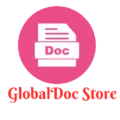Table of Contents
Government Driver Jobs: Requirements, Benefits, & How to Apply
A career as a government driver offers stability, good benefits, and the chance to serve the public. If you enjoy driving and are looking for a secure job with a reliable employer, a government driving position might be the right fit for you.
This guide explores the various types of government driver jobs, the requirements, the benefits, and how to apply for these rewarding positions.
What Does a Government Driver Do?
Government drivers provide transportation services for a variety of government agencies and officials. Their duties can range from transporting passengers to delivering goods and materials.
Key Responsibilities:
- Transporting passengers: Driving government officials, employees, or members of the public to various locations.
- Delivering goods and materials: Transporting mail, supplies, equipment, or other items between government facilities or to the public.
- Maintaining vehicles: Keeping assigned vehicles clean and in good working order, performing basic maintenance checks, and reporting any issues.
- Following safety regulations: Adhering to all traffic laws and safety regulations to ensure the safe transport of passengers and goods.
- Maintaining records: Keeping accurate records of mileage, deliveries, and any incidents or accidents.
- Providing excellent customer service: Interacting with passengers and the public in a professional and courteous manner.
Types of Government Driver Jobs
Government driver jobs exist at all levels of government – federal, state, and local. Here are some examples:
- Federal Government Drivers:
- Department of Defense: Transporting military personnel or supplies.
- U.S. Postal Service: Delivering mail and packages.
- Federal Bureau of Investigation (FBI): Providing transportation for agents and personnel.
- State Government Drivers:
- State Police: Transporting officers and equipment.
- Department of Transportation: Driving state vehicles for inspections or maintenance.
- Social Services: Transporting clients to appointments or facilities.
- Local Government Drivers:
- City or County Officials: Driving mayors, council members, or other officials.
- Public Works: Operating trucks or other vehicles for maintenance, construction, or waste management.
- School Districts: Driving school buses or transporting students with special needs.
Requirements for Government Driver Jobs
The specific requirements for government driver jobs vary depending on the position and the agency. However, some common requirements include:
- Valid Driver’s License: Must have a valid driver’s license with a clean driving record.
- Background Check: Must pass a criminal background check and, in some cases, a security clearance.
- Physical Abilities: Must be able to meet the physical demands of the job, such as lifting, carrying, and sitting for extended periods.
- Driving Skills Test: May be required to pass a driving skills test to demonstrate proficiency in operating different types of vehicles.
- Knowledge of Local Area: Familiarity with the local roads and traffic patterns is often preferred.
- Communication Skills: Must be able to communicate effectively with passengers and other government employees.
Benefits of Government Driver Jobs
Government driver jobs typically offer a competitive benefits package, including:
- Health Insurance: Comprehensive health insurance coverage for employees and their families.
- Retirement Plan: A defined benefit pension plan or a 401(k) retirement savings plan.
- Paid Time Off: Vacation time, sick leave, and paid holidays.
- Job Security: Government jobs often offer greater job security compared to private sector employment.
- Opportunities for Advancement: Many government agencies offer opportunities for career advancement and professional development.
How to Apply for Government Driver Jobs
- Search for Job Openings: Check government job websites (like USAJOBS.gov for federal positions) and individual agency websites for open driver positions.
- Create a Profile: Create an online profile on the relevant job website, including your resume, contact information, and work history.
- Apply for Positions: Carefully review the job announcements and apply for positions that match your qualifications and interests.
- Complete the Application Process: Follow the instructions in the job announcement to complete the application process, which may include submitting additional documents or completing assessments.
- Attend an Interview: If selected, you will be invited to participate in an interview with a hiring manager or a panel of interviewers.
- Complete Background Checks and Tests: You will need to undergo a background check, and potentially a driving skills test or other assessments.
- Receive a Job Offer: If you successfully complete the hiring process, you will receive a job offer and begin your career as a government driver.
Tips for Landing a Government Driver Job
- Highlight your driving experience: Emphasize your experience in driving different types of vehicles, your clean driving record, and any relevant certifications or training.
- Demonstrate your professionalism: Present yourself in a professional manner during the application and interview process.
- Research the agency: Learn about the agency’s mission, values, and the specific duties of the driver position.
- Prepare for the interview: Practice answering common interview questions and be ready to discuss your skills and experience.
- Be patient: The government hiring process can take time, so be patient and follow up as needed.
FAQs About Government Driver Jobs
1. Do I need a CDL to be a government driver?
Some government driver positions require a commercial driver’s license (CDL), particularly those involving large trucks or specialized vehicles. However, many positions only require a regular driver’s license.
2. What is the salary for a government driver?
Salaries vary depending on the location, experience, and the specific agency. The average salary for a government-driver in the U.S. is around $30,000 to $50,000 per year.
3. What are the working hours for government-drivers?
Working hours can vary depending on the position. Some drivers work regular daytime hours, while others may have evening or weekend shifts.
4. What are the opportunities for advancement in government driving jobs?
Experienced government-drivers can advance to supervisory positions, driver trainer roles, or other positions within the agency.
5. How can I find government driver jobs in my area?
Check government job websites, individual agency websites, and local government websites for job openings.
6. What are some of the challenges of being a government driver?
Dealing with traffic, navigating unfamiliar routes, and maintaining a professional demeanor in all situations can be challenging.
7. How can I prepare for a government driver interview?
Practice answering common interview questions, research the agency and the position, and be prepared to discuss your driving experience and qualifications.
8. What should I wear to a government driver interview?
Dress professionally in business attire. Make sure your clothes are neat, clean, and wrinkle-free.
9. Where can I find more information about government driver jobs?
Government agency websites, job boards, and career websites often provide information about government-driver positions.
10. How can I stay updated on the latest government driver job openings?
Create profiles on government job websites and sign up for job alerts to be notified of new openings. You can also check agency websites regularly for updates.



